- Home
- slideshows
- miscellaneous
- I drove a $56,000 Toyota Supra to see if the reimagined legend lives up to its reputation - here's the verdict
I drove a $56,000 Toyota Supra to see if the reimagined legend lives up to its reputation - here's the verdict
The 2020 GR Toyota Supra arrived in a "Renaissance Red" paint job and with an as-tested price of $56,220, a bit of a premium over the $49,990 base model.

The past spring, I'd sampled a 2019 BMW Z4 sDrive30i, a roadster version of the Supra coupé, built on the same assembly line as the Toyota.
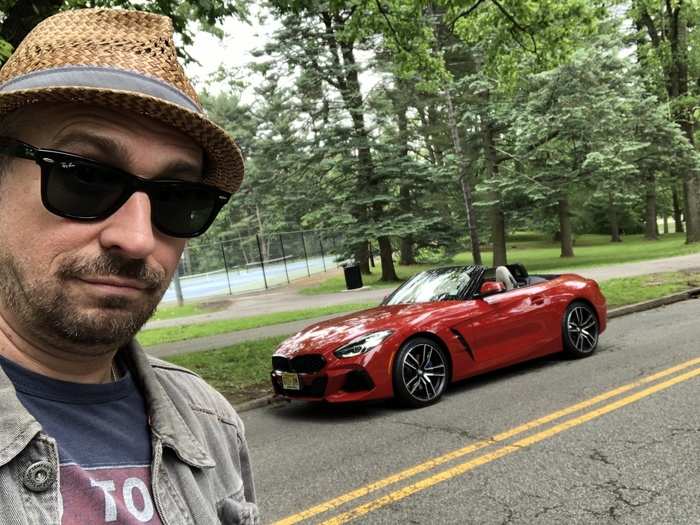
The Supra was a hardtop two-door ...
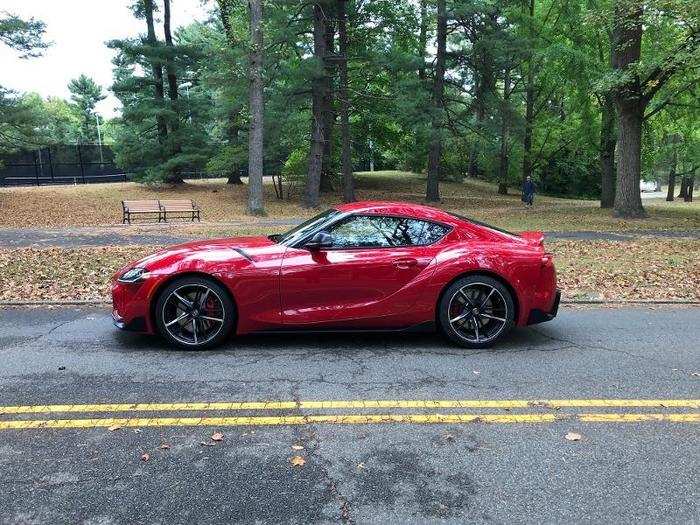
... While the BMW went topless but ...
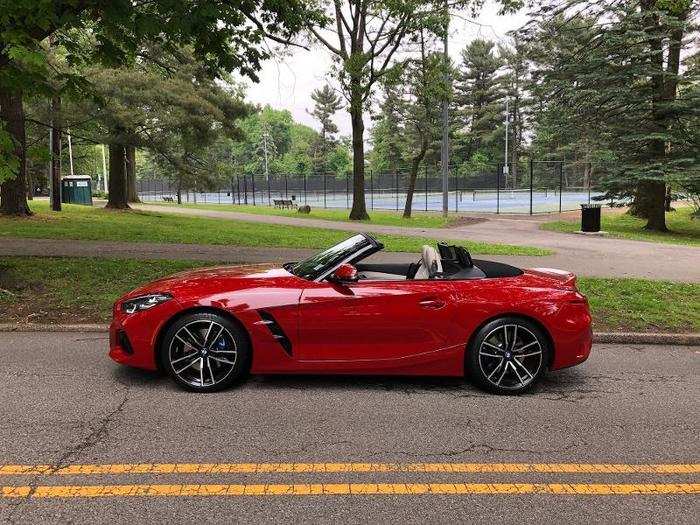
... one could be forgiven for noticing quite a few similarities between the two rides.
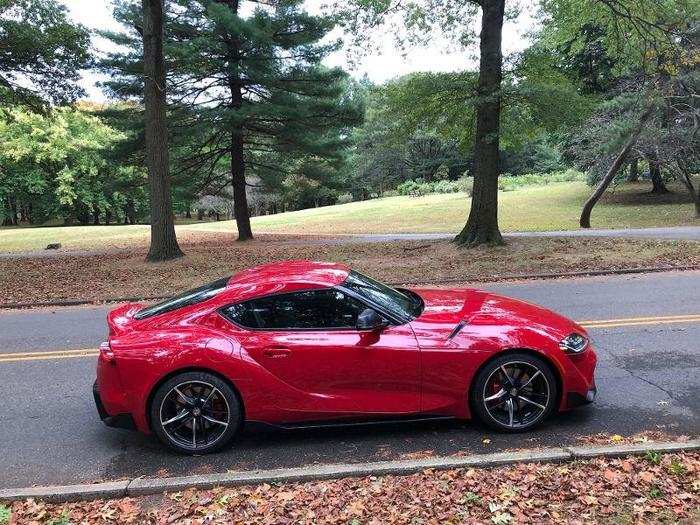
The old MK IV Supra became a Hollywood legend thanks to the 'Fast and Furious' movies.
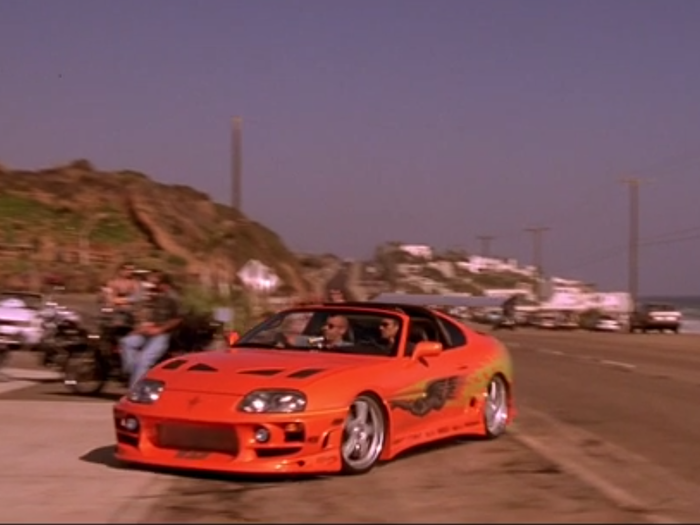
But the car had officially been out of production since 2002. At the 2019 Detroit auto show, Toyota revealed the rebooted Supra — but the initial reaction was subdued.
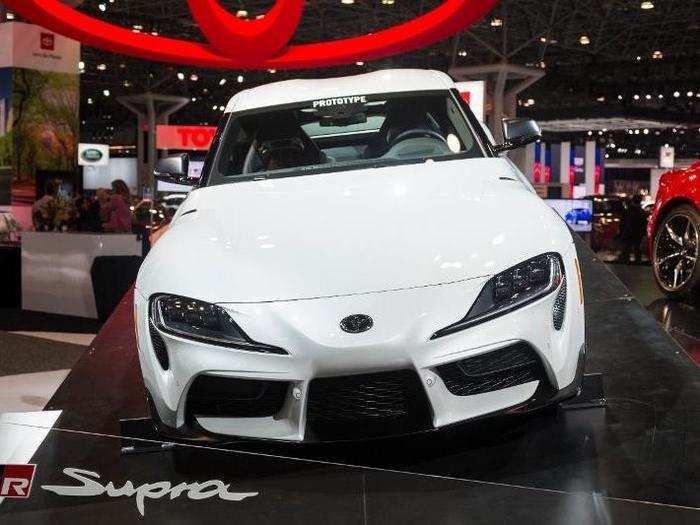
Then reviewers started to drive the new Supra and were enthusing. So I started to look forward to some early-autumn seat time.
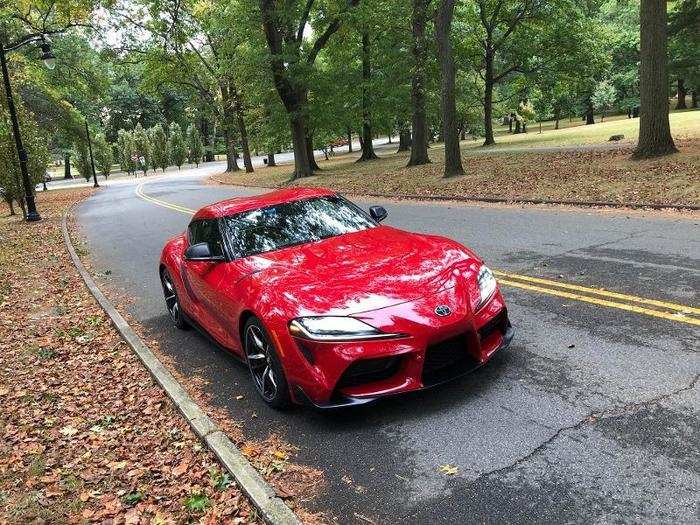
The Supra is a sharp set of wheels. You might call it flashy, and part of the early negative reaction was the result of the design being sort of haphazard and not entirely worth the long wait.
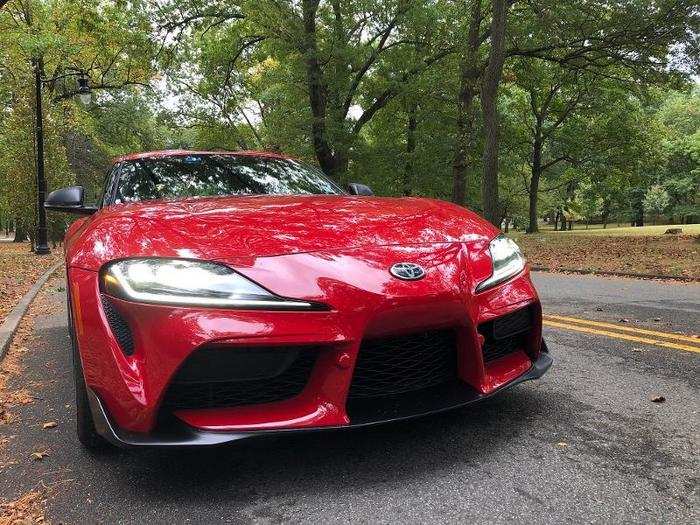
The pre-Supra concepts boasted crisper lines and a more adventurous attitude, while the production car seems to be angling for .. well, let's just say a younger buyer.
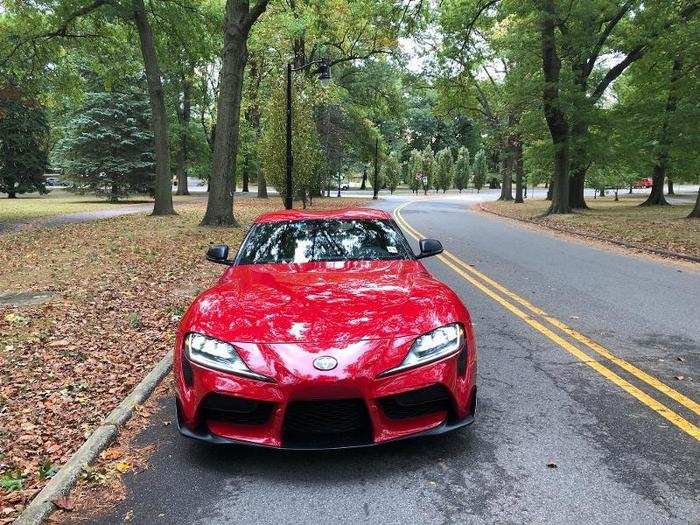
Those potential younger buyers went nuts for the Supra while I was driving it around. The reaction was uniformly thrilled. So I'm not going to complain.
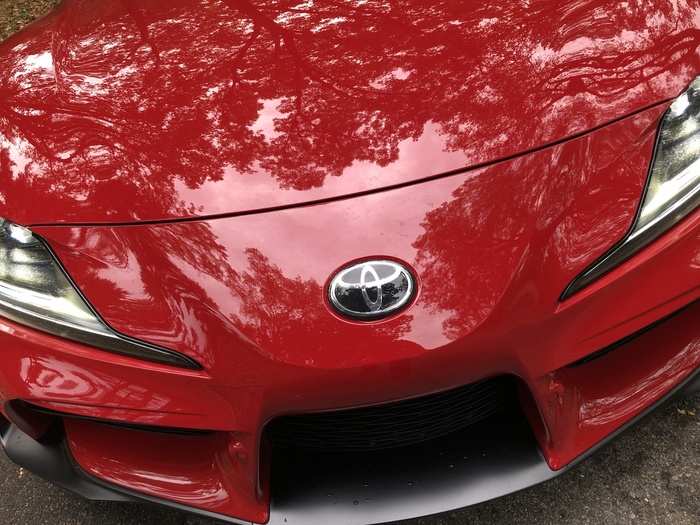
I guess what I dislike is the foldy-swoopy-curvy mashup. That said, designer Nobuo Nakamura clearly executed an overall vision with the Supra. Those are eight-lens auto-leveling LED headlights, by the way.
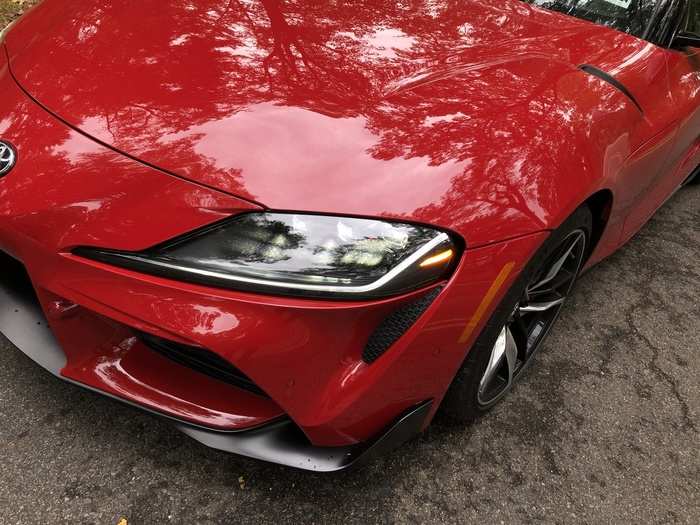
The car does catch the eye from all angles. Note the integrated spoiler. The MK IV had a rather dashing (Obnoxious?) wing. For me, ditching that feature was no major loss.
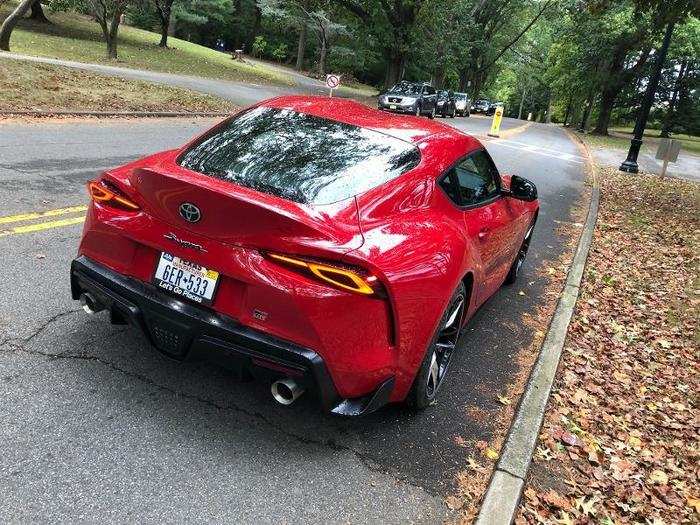
The hood creates a compelling illusion of length, giving the Supra a GT car's vibe even though it lacks a back seat. My tester's 19-inch forged allow wheels concealed vented-disc Brembo brakes, with red calipers.
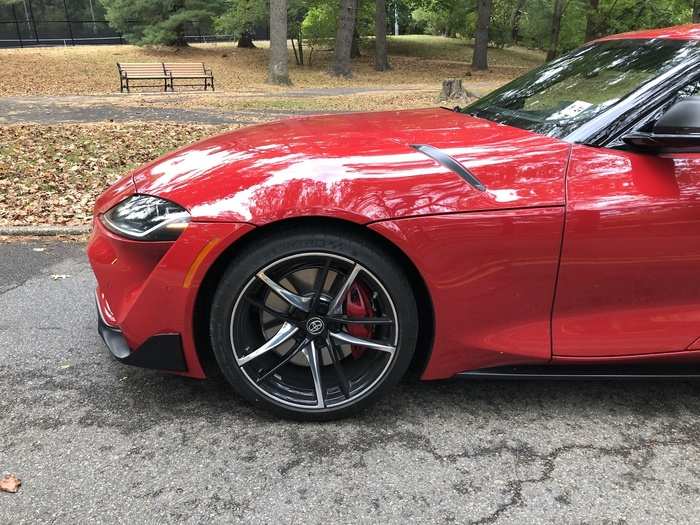
I didn't like it at first, but the bulging curves over the rear wheels grew on me. My mind drifted to the Ferrari 330 Le Mans racer of the 1960s.
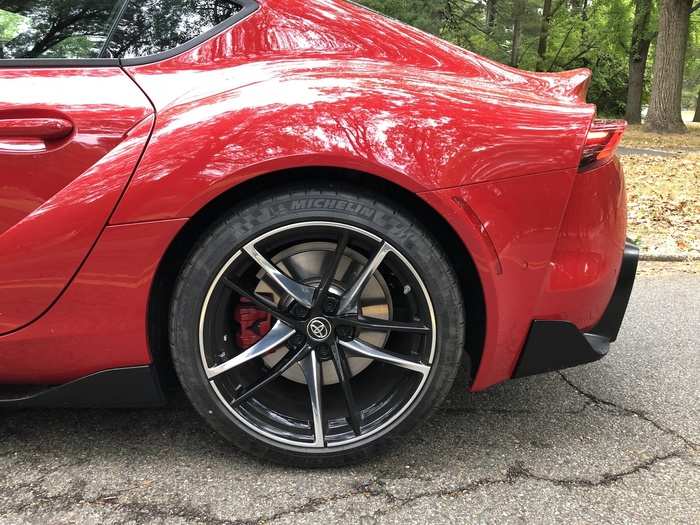
Another oddball touch that somehow works: a furrow through the roof.,
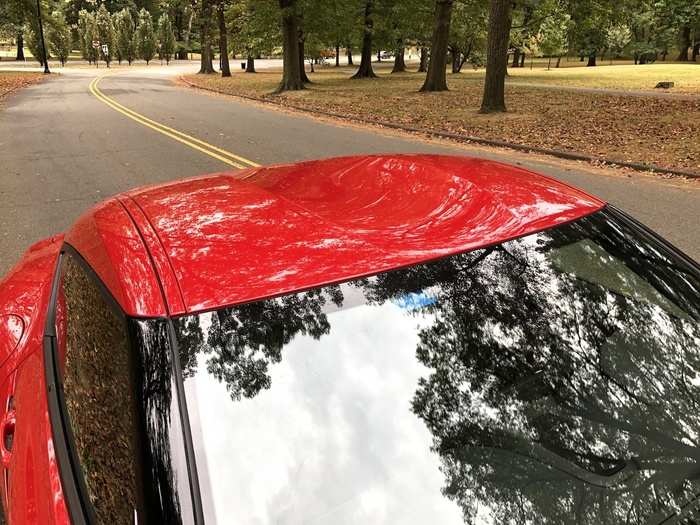
So what does the "GR" in the full Supra name mean? It stands for "Gazoo Racing" — the rubric under which Toyota motorsports operates.
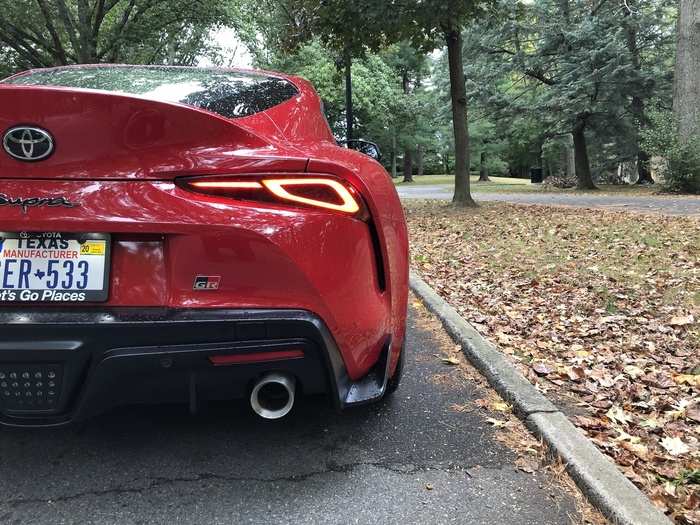
Gotta love that old-school Supra script!
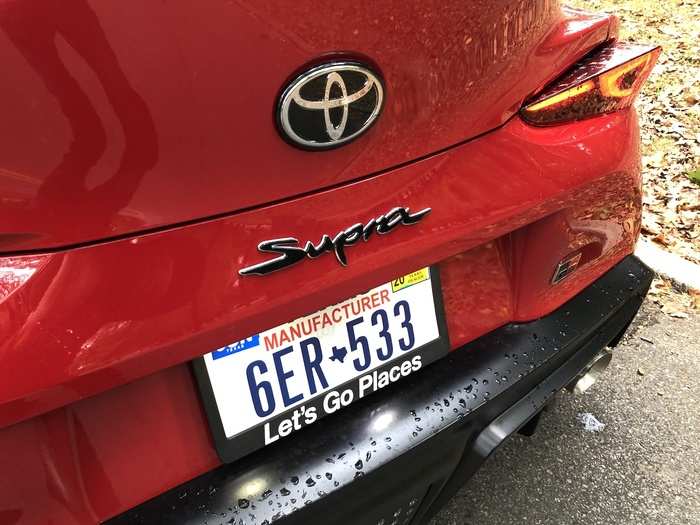
I don't much love the fake plastic side vents on the hood ...
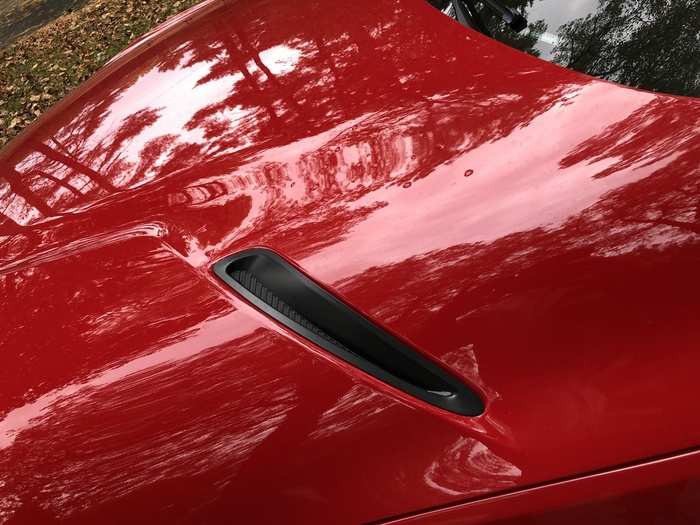
... Or this additional strip of plastic fakery on the doors.
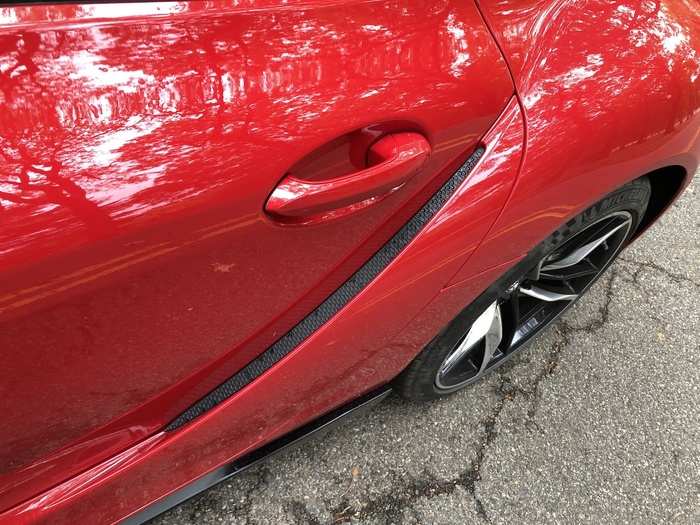
Cargo capacity for this Supra is, unsurprisingly, not great.
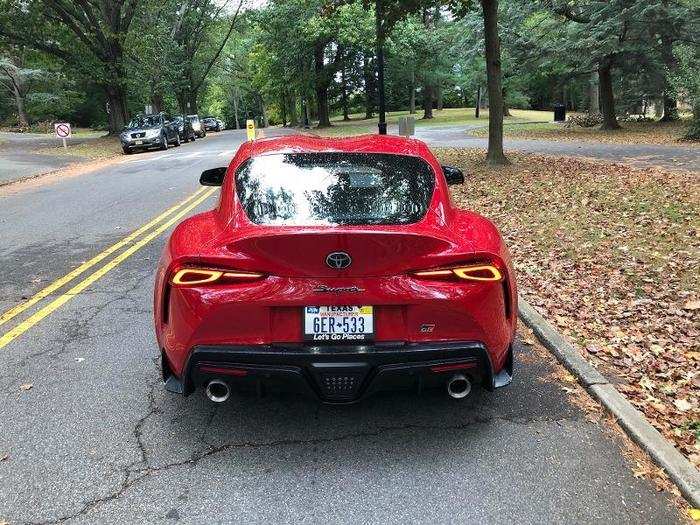
There's less that 10 cubic-feet under the hatch.
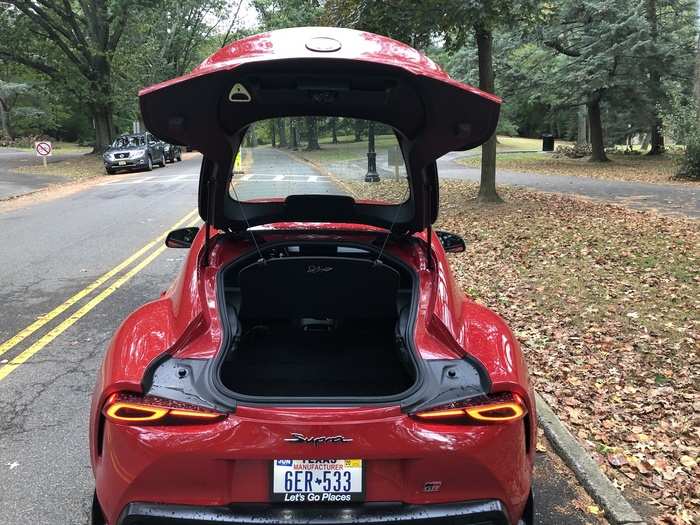
Enough space for two overnight bags. I was also able to fit an electric guitar in there. Forget about a set of golf clubs, however.
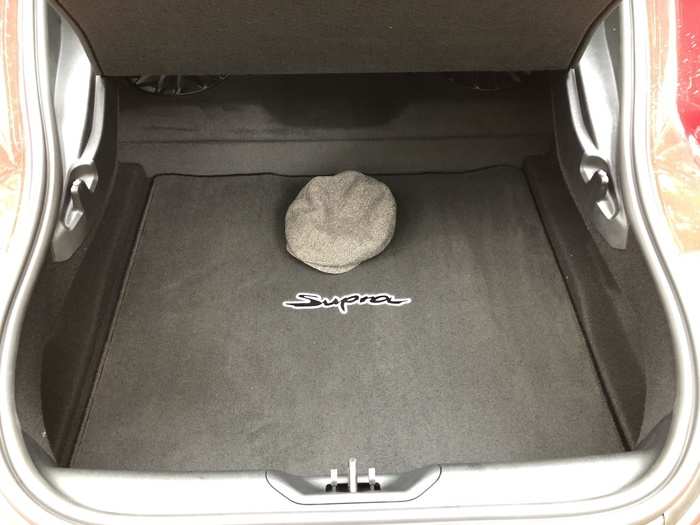
Don't get excited about some extra space for an interior compartment. My wife and I struggled to stow a MacBook Air.

Dual exhaust pipes are a clue that this car has some serious giddy-up. There's also a modest rear diffuser.
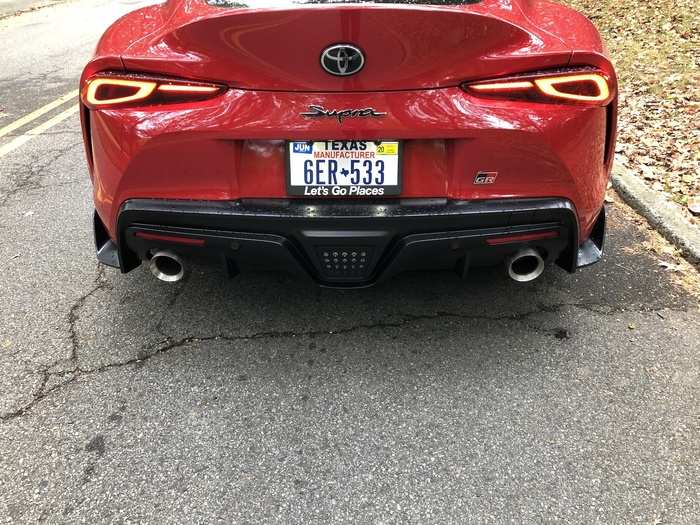
Up front, the aerodynamic tech is unobtrusive, but present. Let's just say that I didn't have to ease the Supra in and out of my driveway for fear of cracking something.
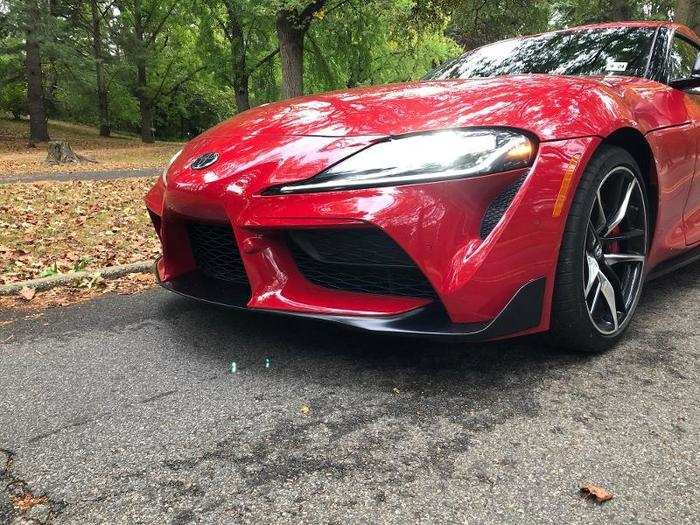
Time to slip inside.
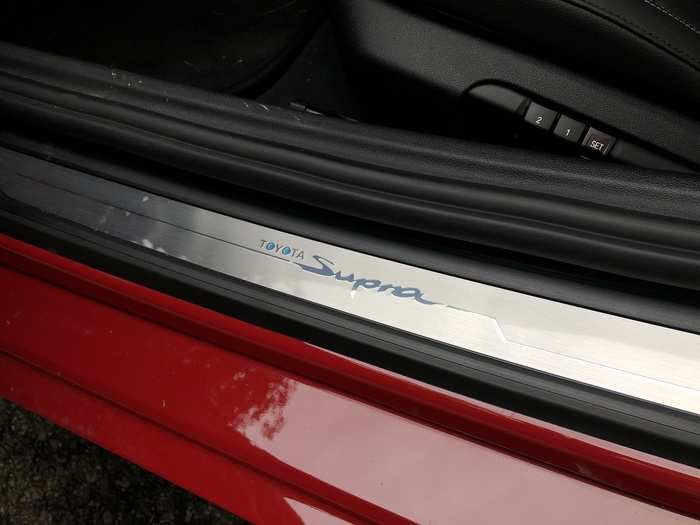
My tester had an all-black interior that actually felt less bimmer-like than I expected — despite the presence of numerous elements that were identical to the Z4's.
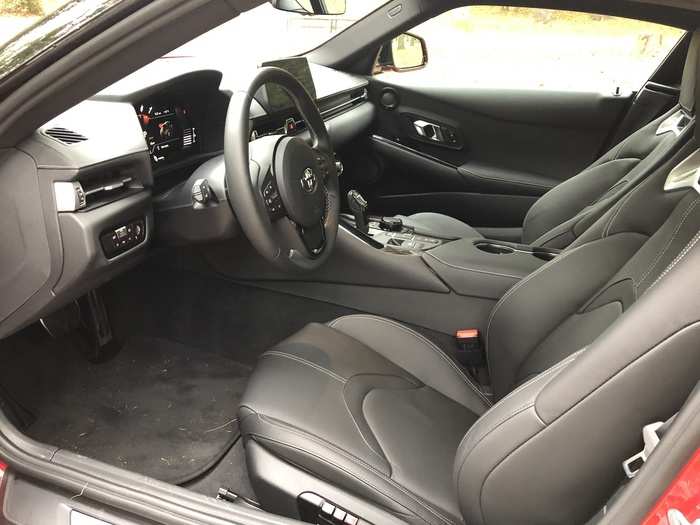
I don't like BMW's fat steering wheels. So the more svelte Toyota version pleased me. The analog-digital instrument cluster was also more straightforward.
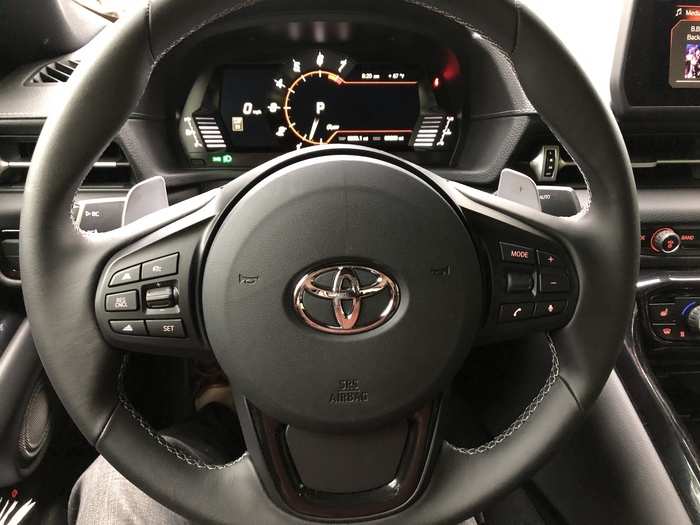
The push-button start-stop is awkwardly located behind the wheel.
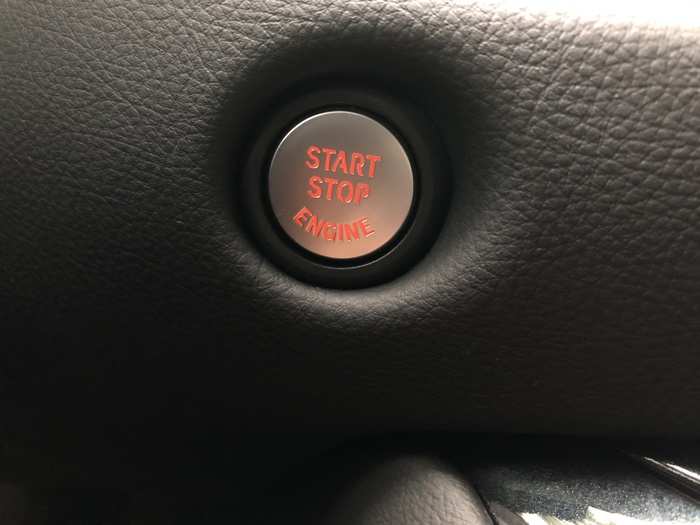
The carbon-fibre is a nice touch, and there isn't too much of it. The eight-speed transmission is a BMW unit, as is the odious toggle shifter. There is, sadly, no available stick-shift. Yet.
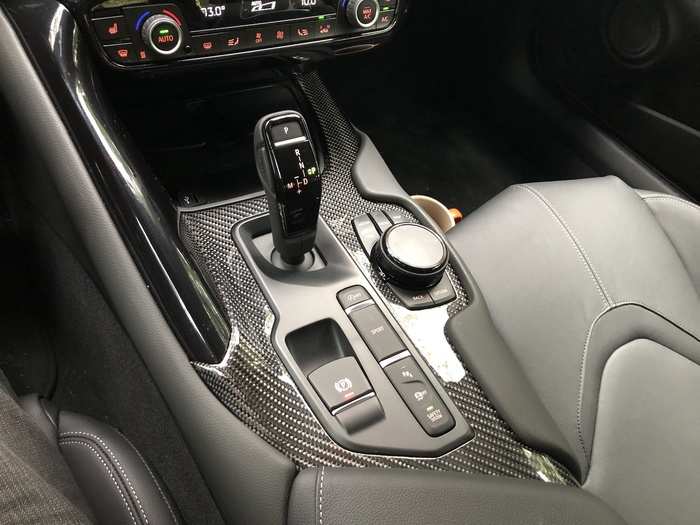
Compared to the Z4's drive settings, the Supra's are easier to deal with. You basically have normal and sport, with some options for customization. The Supra really comes alive in sport mode.
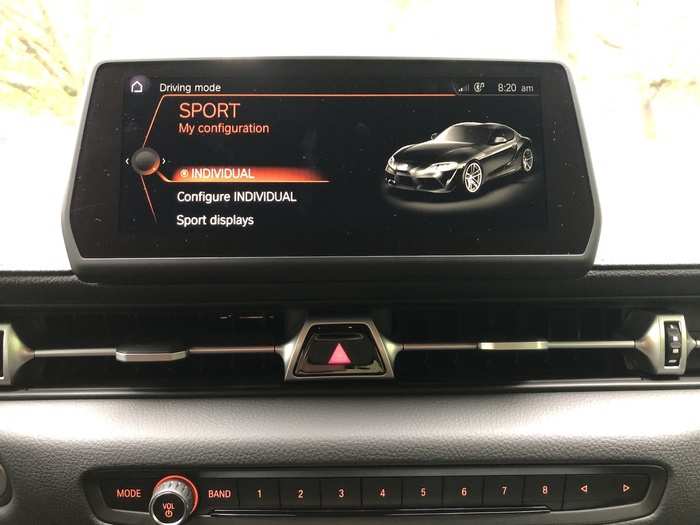
A sport display allows you to monitor that coming-aliveness in real time.
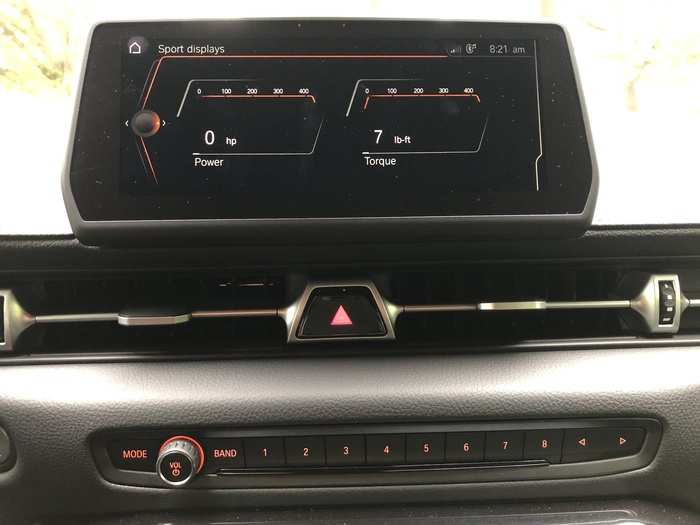
The climate controls are exactly the same as the Z4, but they're also intuitive to use.

The infotainment system runs on an 8.6-inch touchscreen powered by BMW iDrive technology.
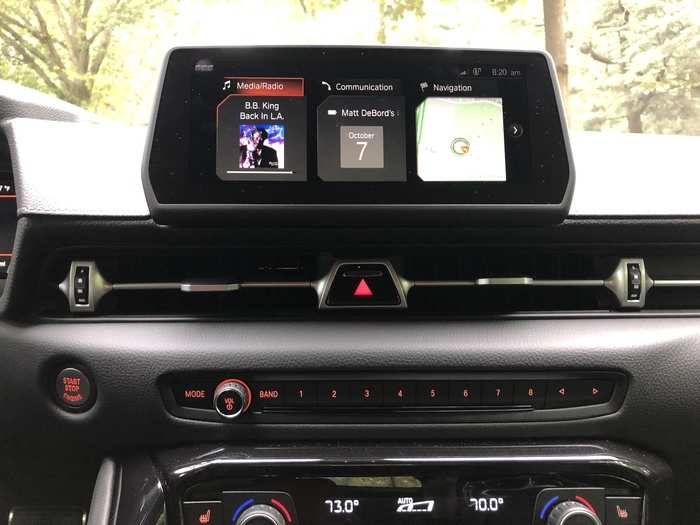
This system, controversial when it launched over a decade ago, has matured into an industry leader. I had no difficulty with GPS navigation, Bluetooth device pairing, connectivity, and I even found the voice-commands to work well, and the 12-speaker JBL audio system sounded great.
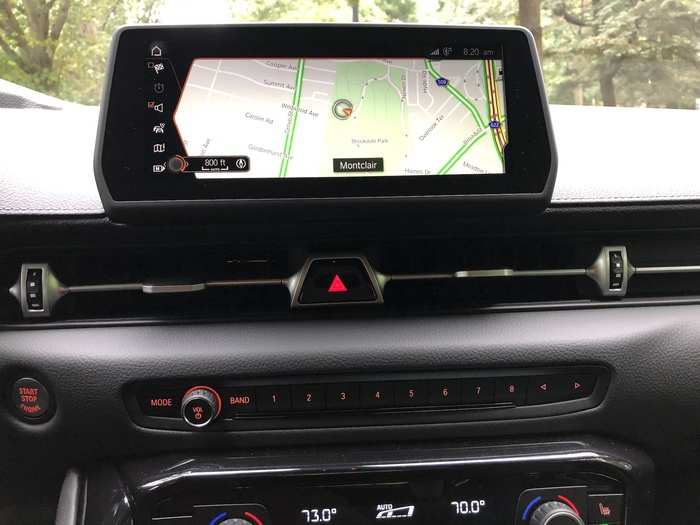
You don't have to use the touchscreen: the familiar iDrive puck-and-buttons controller resides exactly where any BMW owner would expect to find it.
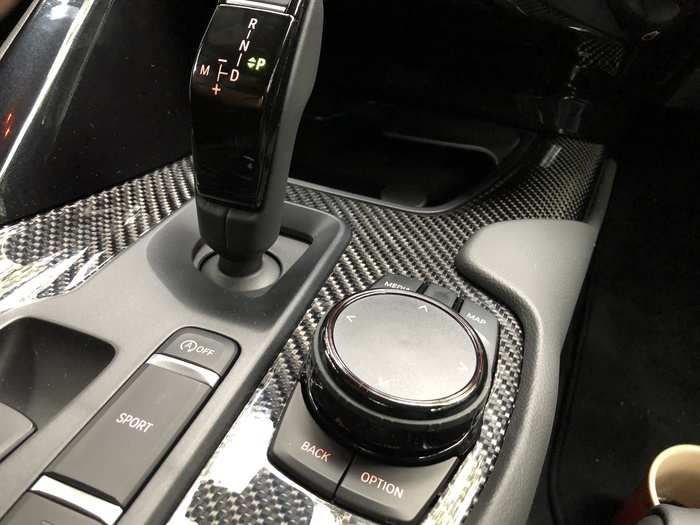
My Supra also featured wireless charging.
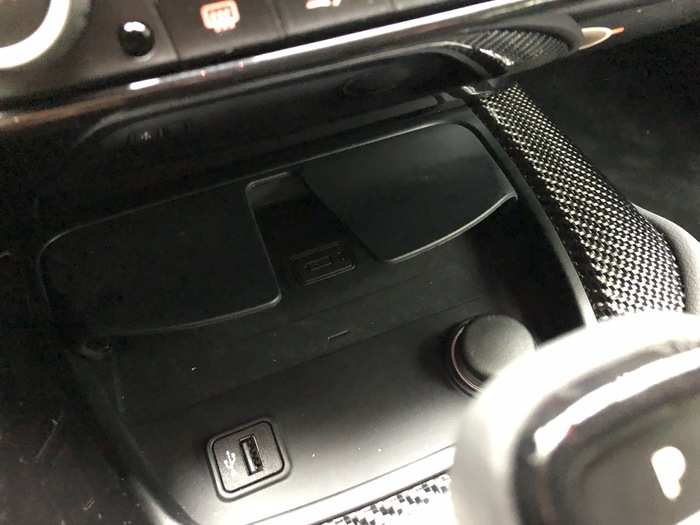
I thought the BMW-derived interior would annoy me, but after a day of driving, the worlds of BMW and Toyota blissfully merged for me. I actually liked the Supra's seats a lot; they're well bolstered for serious motoring (with slots for a racing harness), but comfy for longer cruises.

Let's pop the hood and see what makes this Supra go!
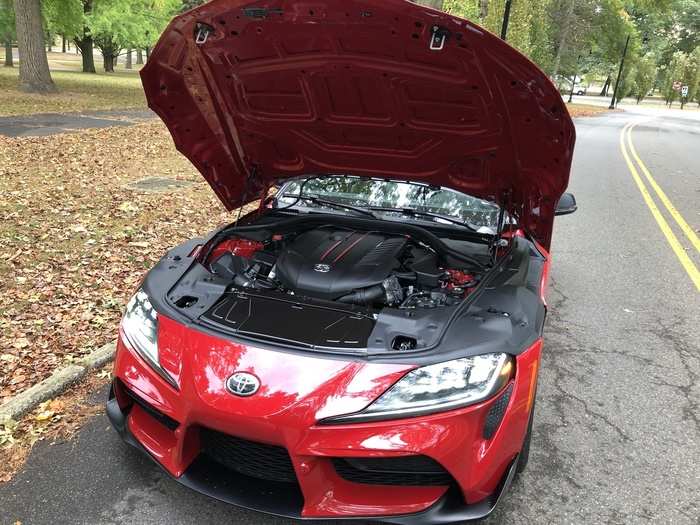
The BMW-sourced, three-liter, turbocharged inline six-cylinder engine makes 335 horsepower with 365 pound-feet of torque. The rear-wheel-drive Supra laid down what I clocked as a four second-ish 0-60 mph time; in sport mode, the burbles and backfire was nicely orchestrated. Fuel economy is deeply OK: 24 mph city/31 highway/26 combined.
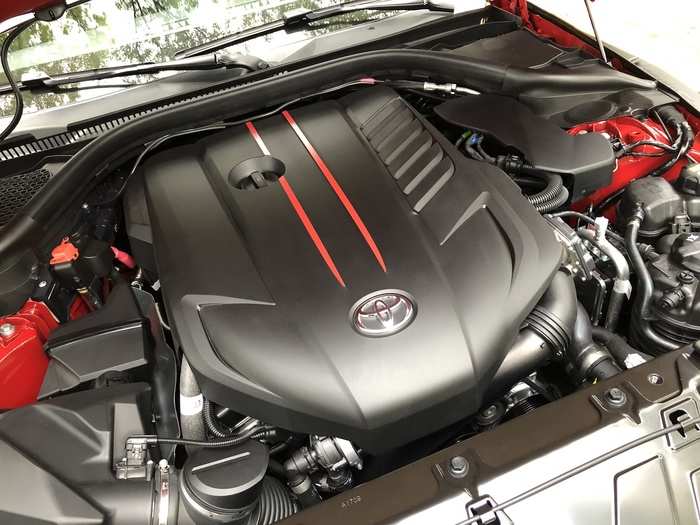
A nice touch under the hood ... even if what's under there is BMW.
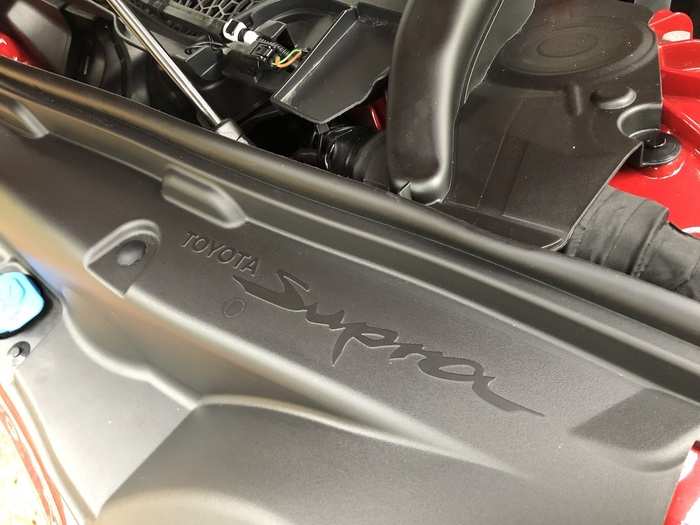
The verdict!
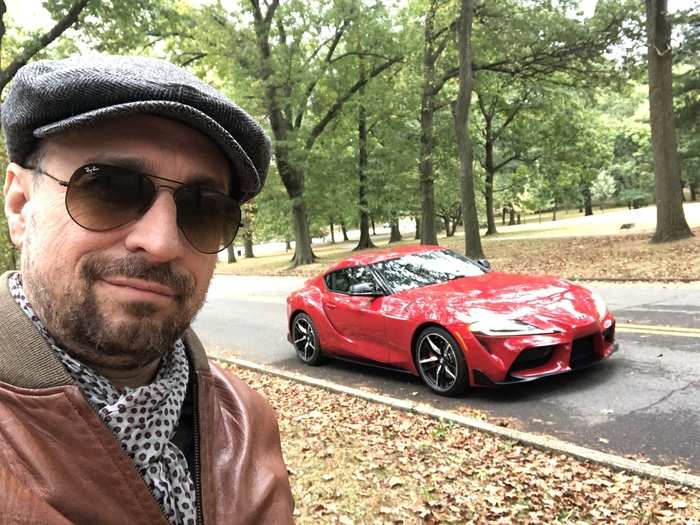
Compared to the four-cylinder Z4 and it's 255-horsepower four-pot, the Supra's much beefier six makes all the difference. Personally, I thought the Z4 was a very nice automobile, but in my review I wrote that its was too much machine. I'm not saying I didn't enjoy it; I did indeed. But the four-cylinder version I sampled, even at modest displacement, was a muscle roadster. (I'll take a wimpy Miata any day, thanks very much.)
The Supra, meanwhile, is a proper, fixed-roof sports car. The best comparison I could come up with was the Subaru BRZ (or the mechanically similar Toyota 86); these are snappy two-doors with small engines and rear-wheel-drive. They're a joy to drive. The Supra, meanwhile, takes their virtues and adds power, power, power. And one feels it. This car has massive punch and ferocious composure. It's hot in a straight line, but it's a thing of beauty when slung into a corner, and the steering is just about perfect.
I thought the brakes seemed a little small for the motor's output, but in practice their moderate grab was more user-friendly that some of the more hulking setups are tested. And while the Z4's stiff chassis felt as though it might have been overcompensated for the lack of a solid roof, the Supra's equally crisp architecture somehow struck me as more forgiving. In many ways, it was sort of perfect.
For about $57,000, this could be among the best values in road-to-track cars on the market. Not for nothing, but the horsepower level was ideally matched to the car — throttling the Supra is a seamless addictive experience, almost devoid of turbo lag, and the sensation of the rear tires locking in and digging down under acceleration is the stuff of dreams.
A six-speed manual would have made the Supra more tempting, but one is supposedly in the works. The eight-speed automatic was competent, but of course it had three more gears that I wanted to use. So I found myself in auto-manual mode for most of my test time, gleefully paddle-shifting and watching the tachometer dance. Third and fourth gears in this car are dazzling. The bottom line is that although the Supra and the Z4 are made at the same factory, they're miles apart — and at $10,000 less, the Supra is the superior machine both in terms of price and performance.
Was it worth the wait? Good question. I wasn't waiting. But my time with the Supra left me craving more, and it continued a theme in my life of truly digging Japanese sports cars. Even if this one speaks with a slight Austrian accent.
Popular Right Now
Popular Keywords
Advertisement